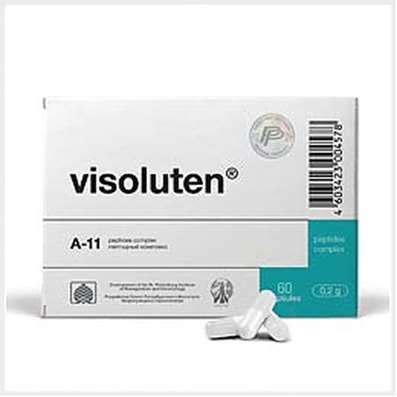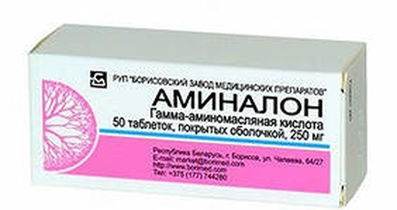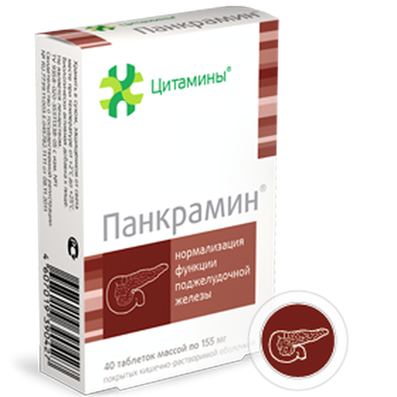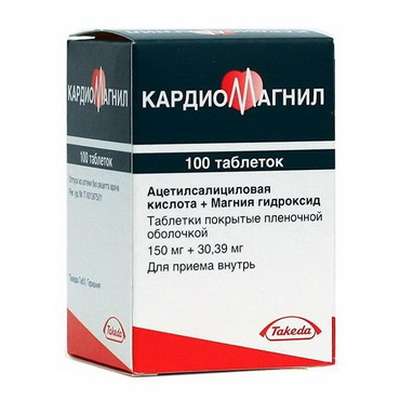Instruction for use: Heparoid Lechiva
I want this, give me price
Dosage form: skin ointment
Active substance: Heparinoidum
ATX
C05BA01 Organic heparinoids
Pharmacological group
Anticoagulants
The nosological classification (ICD-10)
I80 Phlebitis and thrombophlebitis: Diseases of peripheral vessels; Inflammation of superficial veins; Inflammatory diseases of veins; Deep venous thrombophlebitis; The disease of veins; Disease of the veins of the lower extremities; Diseases of peripheral vessels; Migrating phlebitis; Insufficiency of veins of lower extremities; Exacerbation of chronic thrombophlebitis; Acute thrombophlebitis; Acute thrombophlebitis of superficial veins; Periphlebitis; Periflebit surface; Superficial inflammation of veins; Surface thrombophlebitis; Surface phlebitis; Thrombophlebitis; Deep vein thrombophlebitis; Thrombophlebitis superficial; Phlebitis; Phlebitis of deep veins; Phlebitis of superficial veins; Phlebopathy; Chronic thrombophlebitis; Endophlebitis
I83 Varicose veins of lower extremities: The feeling of heaviness and fatigue in the lower limbs; Varicose disseminated type; varicose veins; Varicose veins of the lower extremities; Varicose disease of lower limbs; Varicose superficial veins; Varicose veins; Varicose vein disease; varicose syndrome; varicose syndrome; Venous claudication; venous varices; venous disease; The disease of the lower extremities; Prevarikozny syndrome; Predvarikozny syndrome; Chronic varicose veins; Sclerotherapy varices
I84 Hemorrhoids: Painful hemorrhoidal nodes; External hemorrhoids; Internal hemorrhoids; Inflammation of hemorrhoids; Exacerbation of hemorrhoids; Chronic bleeding hemorrhoids; Acute hemorrhoidal attack
I87.0 Postphlebitic syndrome: post-thrombotic venous insufficiency; Postthrombotic disease; Post thrombophlebitic syndrome; Post-thrombophlebitis; Post-thrombophlebitic syndrome; Postphlebitic syndrome; Post thrombotic syndrome; Postphlebitic syndrome (stasis syndrome)
L87 Transepidermal perforations
T08-T14 Injuries to unspecified part of trunk, limb or body region
T14.3 Dislocation, sprain and damage to the capsular-ligamentous apparatus of the joint of the unspecified area of the body:Painful stretching of the muscles; Pain and inflammation in tension; Dislocation of dislocation; Degenerative changes in the ligamentous apparatus; Edema due to sprains and bruises; Edema after interventions for sprains; Damage and rupture of ligaments; The musculoskeletal system is damaged; Damage to ligaments; Damage to the joints; Ligament ruptures; Tendon tendons; Ruptures of the tendons of muscles; Stretching; Crick; Stretching of the muscle; Sprain; Tension of the tendons; Extensions; Stretch muscles; Sprains; Tension of the tendons; Injury of the musculoskeletal system; Injuries to the joints; Injuries of capsule-articular tissues; Injuries of the osteoarticular system; Injuries to ligaments; Injuries to the joints; Joint wounds; Stretching of the ligamentous apparatus; Habitual stretching and tearing
Z100 * CLASS XXII Surgical practice: Abdominal surgery; adenomectomy; Amputation; Coronary angioplasty; Angioplasty of the carotid arteries; Antiseptic skin treatment for wounds; Antiseptic Hand; Appendectomy; atherectomy; Balloon coronary angioplasty; Vaginal hysterectomy; The coronary bypass; Interventions in the vagina and cervix; Interventions on the bladder; Intervention in the mouth; Restoration and reconstructive surgery; Hand hygiene of medical personnel; Gynecologic surgery; Gynecological intervention; Gynecological surgery; Hypovolemic shock during operations; Disinfection of purulent wounds; Disinfection of wounds edges; Diagnostic intervention; Diagnostic procedures; Cervical Diathermocoagulation; Long-surgery; Replacing the fistula catheters; Infection in orthopedic surgery; Artificial heart valve; cystectomy; Short-term outpatient surgery; Short-term operation; Short surgical procedures; Krikotireotomiya; Blood loss during surgery; Bleeding during surgery and in the postoperative period; Kuldotsentez; laser photocoagulation; laser coagulation; retinal laser coagulation; Laparoscopy; Laparoscopy in Gynecology; CSF fistula; Small gynecological operations; Small surgical procedures; Mastectomy and subsequent plastic; mediastinotomy; Microsurgical operations on the ear; Mukogingivalnye operation; suturing; Minor surgery; neurosurgical operation; Immobilization of the eyeball in ophthalmic surgery; testectomy; pancreatectomy; Perikardektomiya; The period of rehabilitation after surgery; The period of convalescence after surgery; Percutaneous transluminal coronary angioplasty; Pleural thoracentesis; Pneumonia postoperative and posttraumatic; Preparation for surgical procedures; Preparation for surgery; Preparation of the surgeon's hands before surgery; Preparation of the colon for surgical procedures; Postoperative aspiration pneumonia in neurosurgical and thoracic surgery; Postoperative nausea; Postoperative bleeding; postoperative granuloma; postoperative shock; The early postoperative period; myocardial revascularization; Radiectomy; gastric Resection; bowel resection; uterine Resection; liver Resection; enterectomy; Resection of part of the stomach; Reocclusion of the operated vessel; Bonding tissues during surgical procedures; Removal of sutures; Condition after eye surgery; Condition after surgery; Condition after surgery in the nasal cavity; Condition after gastrectomy; Status after resection of the small intestine; Condition after tonsillectomy; Condition after removal of the duodenum; Condition after phlebectomy; Vascular surgery; Splenectomy; Sterilization of surgical instruments; Sterilization of surgical instruments; sternotomy; Dental surgery; Dental intervention in periodontal tissues; strumectomy; Tonsillectomy; Thoracic surgery; Thoracic surgery; total gastrectomy; Transdermal intravascular coronary angioplasty; Transurethral resection; Turbinektomiya; Removal of a tooth; cataract surgery; Removal of cysts; tonsillectomy; Removal of fibroids; Removing the mobile primary teeth; Removing polyps; Removing broken tooth; Removal of the uterus body; Removal of sutures; Fistula likvoroprovodyaschih ways; Frontoetmoidogaymorotomiya; Surgical infection; Surgical treatment of chronic limb ulcers; Surgery; The surgery in the anal area; The surgery on the colon; Surgical practice; The surgical procedure; Surgical interventions; Surgery on the gastrointestinal tract; Surgical procedures on the urinary tract; Surgical procedures on the urinary system; Surgical intervention of the genitourinary system; Surgical procedures on the heart; Surgical manipulation; surgery; Surgery on the veins; Surgical intervention; Vascular surgery; Surgical treatment of thrombosis; Surgery; cholecystectomy; Partial gastric resection; hysterectomy; Percutaneous transluminal coronary angioplasty; Percutaneous transluminal angioplasty; Coronary artery bypass; tooth Extirpation; Extirpation of milk teeth; pulpectomy; pulsative cardiopulmonary bypass; tooth Extraction; teeth Extraction; cataract extraction; Electrocoagulation; endourological intervention; episiotomy; Etmoidotomiya; Complications after tooth extraction
Composition and release form
1 g of ointment contains heparinoid 2 mg (100 ED); In tubes of 30 grams, in a box of 1 tuba.
Pharmachologic effect
Mode of action - Anti-inflammatory, anti-aggregation, anticoagulant.
It increases the prostacyclin-synthesizing activity of the vessel wall, has a direct anticoagulant and local antithrombotic effect.
Indication of the drug Heparoid Lechiva
Contusions of soft tissues, traumatic edema, hematomas (including postinjection), stretching of tendons and ligaments, phlebitis and thrombophlebitis of superficial veins of various etiology and localization, varicose veins of lower extremities, incl. Complicated by phlebitis, thrombophlebitis and trophic ulcers; hemorrhoids.
Contraindications
Hypersensitivity, hemorrhagic diathesis, purpura, a condition with a tendency to bleeding.
Side effects
Rarely - hemorrhages (when used in large areas).
Dosing and Administration
Externally. On the affected area and surrounding tissues a layer of ointment with a thickness of about 1 mm is applied and lightly rubbed into the skin 2-3 times a day. The place covered with ointment can be covered for a short time with PE film (the edges are fixed with plaster), then bandaged with a bandage. With a trophic ulcer, rub only in the tissues surrounding the ulcer.
Precautionary measures
Use with caution in pregnancy during the last 3 months (bleeding may occur) and with simultaneous use with anticoagulants (careful monitoring of blood clotting indices is recommended).
Storage conditions of the drug Heparoid Lechiva
In the dark place at a temperature of 10-25 ° C.
Keep out of the reach of children.
The shelf life of the drug Heparoid Lechiva
3 years.
Do not use beyond the expiration date printed on the package.

 Cart
Cart





